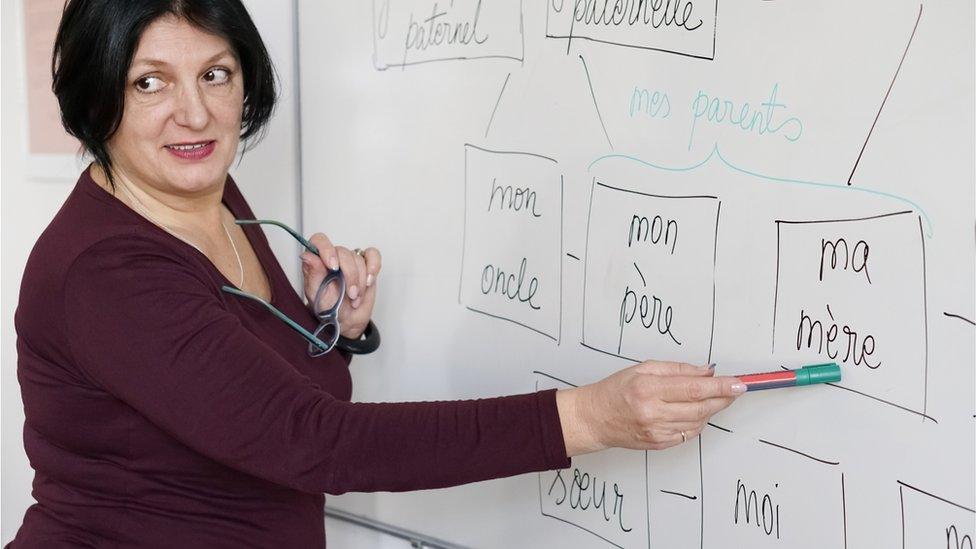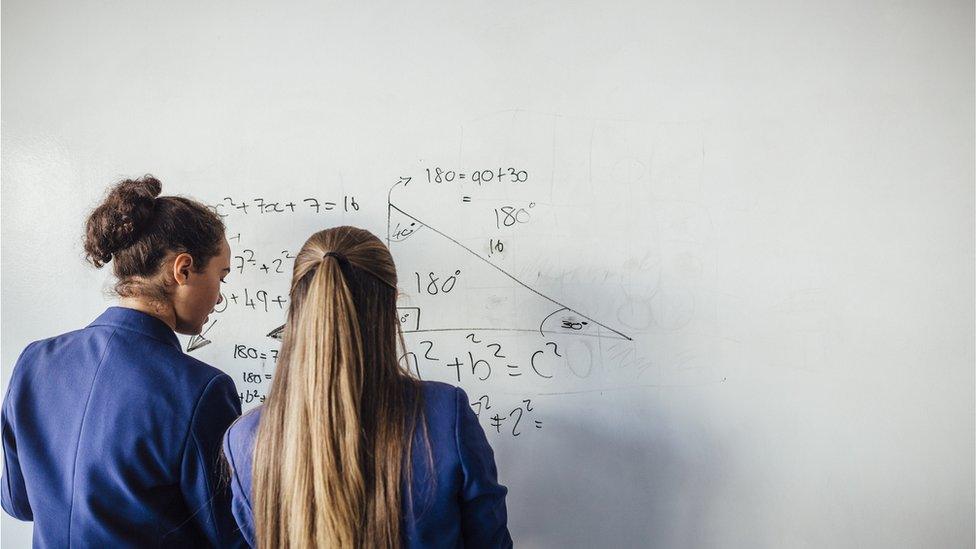Languages: Drop in number of pupils taking French
- Published
- comments

The number of pupils studying French in Northern Ireland schools has fallen
There has been a fall of more than 40% in the number of pupils in Northern Ireland taking GCSE French over the past decade.
That is according to a study of modern language learning in schools carried out by the British Council.
Many teachers said languages were often perceived as too difficult by pupils, compared with other subjects.
The study also suggests almost half of Northern Ireland primary schools offer no foreign language lessons to pupils.
The British Council's findings echo those of a BBC survey into post-primary modern languages, published in February.
The council has been carrying out studies of language trends in schools in England and Wales for a number of years.
However, this is the first time it has carried out a comparable study in Northern Ireland.
Its findings are based on responses from almost 320 schools - 218 primaries and about 100 post-primaries.
One north Belfast school - the Boys' Model - has no students studying languages at A-level or GCSE, reports the Belfast Telegraph, external.
The British Council said that 55% of primary schools provided some modern language teaching even though it is not a statutory part of the primary curriculum.
Spanish was the most taught language, followed by French.
'Difficulty of courses'
Schools that taught languages said that it improved cultural understanding and broadened pupils' horizons.
However, only a quarter of primaries teaching a language said it was a regular, sustained feature of their curriculum.
Forty-five percent of primaries that responded to the study said they taught no modern languages.
They said a lack of funding was the main reason for that, followed by a lack of expertise within the school and a lack of external support.

Entries for GCSE modern languages fell by almost a fifth between 2010 and 2015
Previous funding from the Department of Education for a modern language programme in primary schools was cut in 2015.
Many respondents in post-primary schools said that pupils were put off learning languages due to the perceived difficulty of the courses compared with other subjects.
Low numbers of pupils and declining funding has also led to some schools dropping language classes, especially at A-level.
In 2010, 7,243 pupils entered GCSE French in Northern Ireland but that had fallen to 4,301 by 2018.
Overall, entries for GCSE modern languages fell by almost a fifth in the same period.
Entries for both GCSE German and Irish fell by about 6% between 2010 and 2018.
There was, however, a 16% increase in the number of pupils taking Spanish for GCSE.
There has also been an increase in the number of pupils in Irish medium education in recent years.
'Clear message'
According to statistics from the Department of Education, there were 6,500 pupils in Irish medium education in 2018-19, a rise of 1,600 since 2013-14.
The British Council study also found that grammar schools were more likely to teach languages to a greater degree than non-selective schools.
Some teachers said that languages were not valued in Northern Ireland or the UK and that influenced pupils' decisions whether to study one for GCSE or A-level or not.
Others criticised the fact that languages were not a statutory part of the primary curriculum and that Queen's University in Belfast and Ulster University had dropped some language courses in recent years.
Prof Janice Carruthers from Queen's University said there should be a specific language strategy for schools in Northern Ireland.
"We need a clear message from our devolved government about the importance of languages for key parts of our economy, not least tourism and inward investment," she said.
"Languages are crucial for cultural understanding, both at home and internationally."
- Published7 May 2019

- Published14 March 2018
